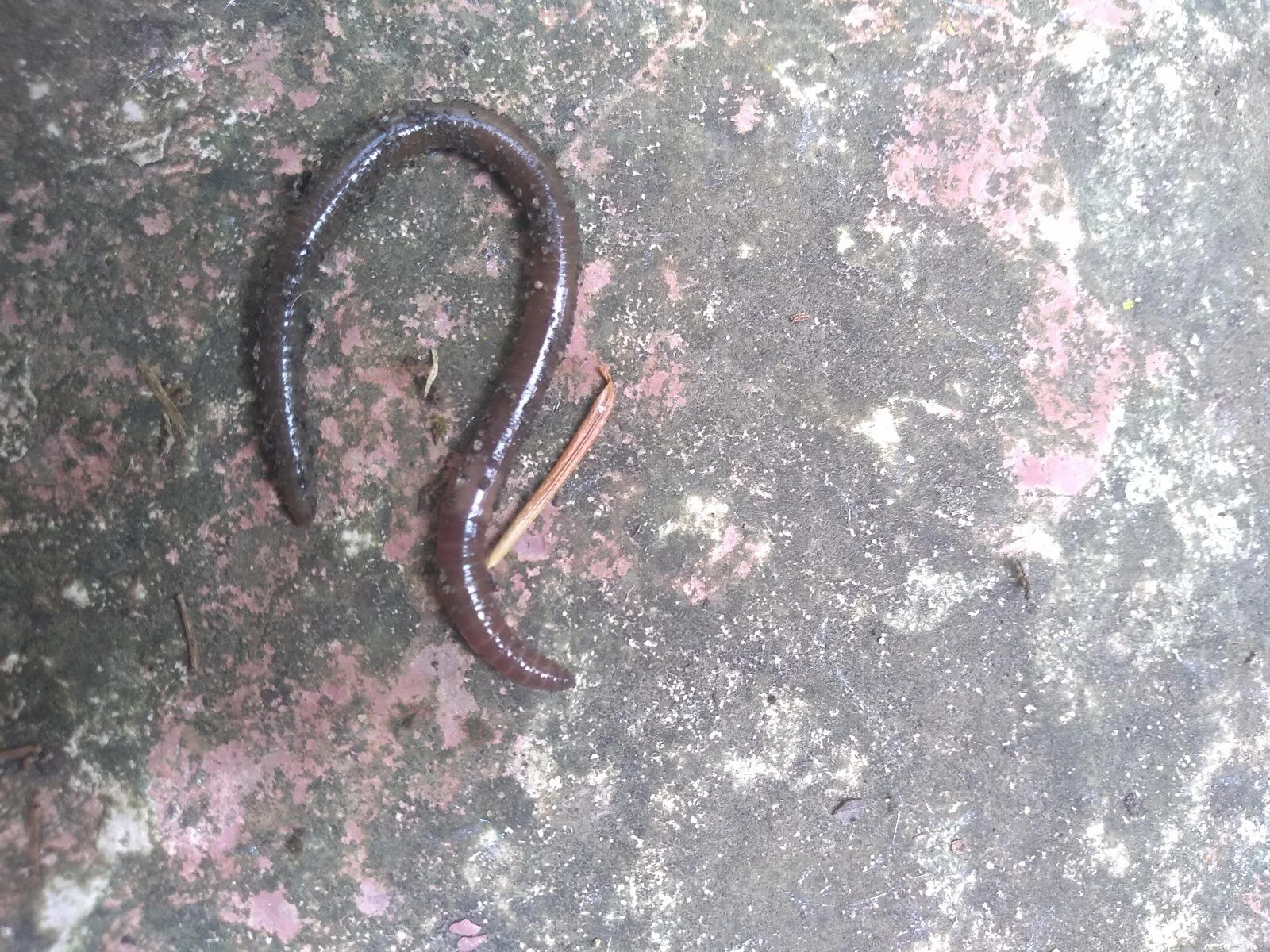By Angela Gupta, UMN Extension Professor of Forestry and MNWWN Board Member
Jumping worm by A. Gupta, UMN Extension
By Angela Gupta, UMN Extension Professor of Forestry and MNWWN Board Member
Jumping worms (Amynthas spp.) are a relatively new and very troublesome species in Minnesota. Like all earthworms in Minnesota, these are non-native. However, unlike most earthworms currently found in Minnesota jumping worms live in the top few inches of soil, can survive in surprisingly and troublesomely dense populations, and eat organic material including leaves, mulch and even plants. These worms can wreak havoc on gardens and the gardeners that tend to them. (To learn more about jumping worms visit the UMN Extension website.)
As a University of Minnesota Extension Forester who specializes in invasive species, passionate gardeners often call me distraught with questions on how to manage jumping worms. Sadly, there’s no scientifically proven treatment, so the most honest response I could offer is an empathetic ear and a heartfelt, “I’m sorry”. This is a very unsatisfying answer to distraught and sometimes tearful callers. Call after call I began to realize just how much these worms were negatively impacting human emotions. This past winter I spent some time digging more deeply into the human emotions caused by jumping worms. Here’s what I learned.
First, to be clear, I can’t find anyone that’s actually studied the emotional toll of jumping worms (or really invasive species) on humans. I realized I needed to broaden my inquiry. There’s more information about ecophysiology and climate change (also linked to solastalgia), which is the emotional distress caused by environmental change.
In 2020, shortly after we all went into lockdown because of the pandemic, I launched a Jumping Worm: Report Management citizen science project to explore ways to try and manage jumping worms together. This project is for gardeners or landowners/managers that have jumping worms and are looking for ways to manage them. It began as a way to find a management solution for a worm, but I began to realize it also helped folks emotionally.
This spring I created the Jumping Worm Management: Learn about impacts, resources, and potential treatments, and on pages 7-8 there’s now a whole section devoted to human emotions. It’s quite remarkable that these small worms can change a garden or landscape, as well as the escape that landscape provides to the humans that love it. That’s why some folks experience solastalgia; they’re longing for the pre-jumping worm yard and garden they had. Serious leisure is a term I learned that essentially relates to how people view themselves; their identity. For some serious gardeners, being a gardener is akin to being a mom, daughter, or sister - it’s very much a part of their view of themselves. Gardening is something they take pride in, and they work hard to nourish that garden and cherish the time they spend in it. The idea that gardening as a leisure and as an identity has been seriously altered by a worm is devastating and often heartbreaking.
I also learned about disenfranchised grief. Disenfranchised grief is a grief for which our culture doesn’t have recognized rituals. An example that helped me understand it was that it is the type of grief the family of a person addicted to drugs might experience. Our society doesn’t have commonly accepted ways to mourn or accept drug use, but family members still feel acute loss and pain. The loss of a beloved pet may also fall into this category. People are mourning the loss of their beloved yard and hobby, and I think they often felt like the crazy lady with worms. It is very, very emotionally taxing.
While I was learning about the human emotions of these issues, I really wanted to help those with jumping worms and those in my citizen science project to feel better and more empowered. I realized just how important hope and free will are to healing, and thankfully the Report Management project has always offered some hope that together we might find a reasonable management approach to jumping worms. In addition, the project offers agency, or free will, in that you can help us, the jumping worm professionals, better understand what’s working and what’s not working so we can further the field. The work these volunteers are doing is truly important.
In addition, it was good to be reminded that the nature based human health benefits that come from being outside, getting exercise, and connecting with the environment, plants and soil, are still beneficial, even when jumping worms alter your plans and change the landscape.
The journey to understand the human emotional side of worms is not a journey I ever expected to be on, but I’ve learned a lot and hope it’s helping. A group of Master Naturalist trainees accepted this challenge and did a literature review to help me further understand these issues. I have a lot more to read this winter!
Full disclosure, I’ve had jumping worms in my home yard for 3 years and have worked through all of these emotions. It is a relief to know I’m not alone and that these emotions are real and have names. I still have jumping worms and am continuously working to manage them, but it’s less isolating and even, at times, a little fun to try new things knowing we might actually learn something truly exciting.
Angie testing coco mulch to reduce jumping worm populations. A. Gupta, UMN Extension


